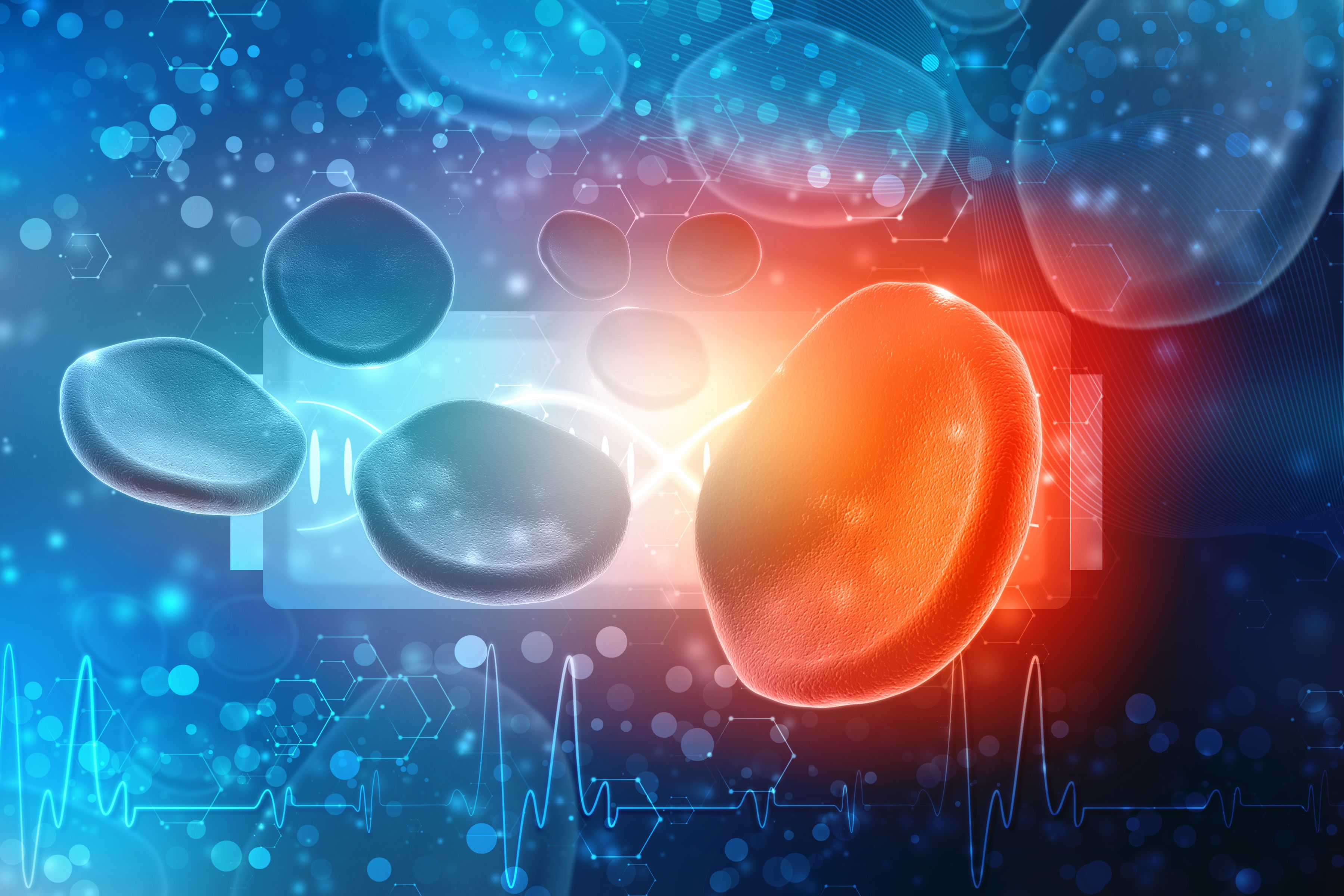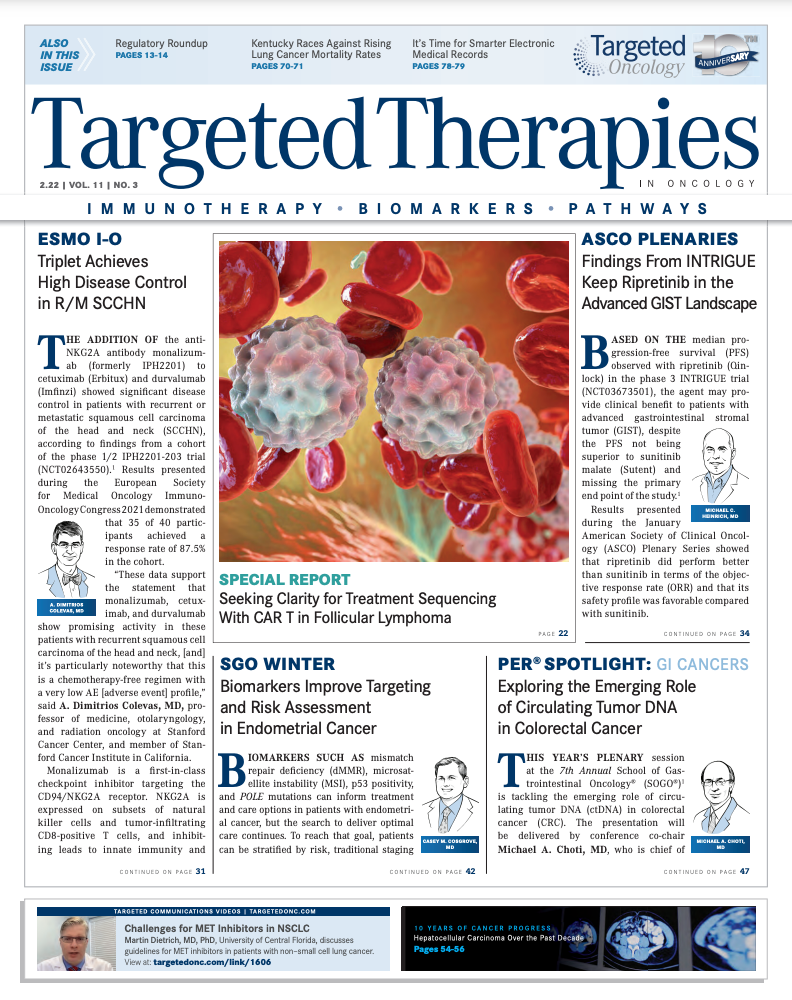TIM3 Checkpoint Is a Potential Target for Acute Myeloid Leukemia Treatment
In acute myeloid leukemia, ongoing clinical trials are exploring the potential of this checkpoint alone or as part of a dual immunotherapy regimen.

The immune checkpoint molecule T-cell immunoglobulin and mucin domain-3 (TIM3) has prompted growing interest and is expected to expand the armamentarium of anticancer immunotherapies.1-3
Ongoing clinical trials are exploring the potential of this checkpoint alone or as part of a dual immunotherapy regimen. Promising findings, seen both preclinically and clinically, have been reported in the setting of acute myeloid leukemia (AML), capitalizing on TIM3’s ability to kill leukemia stem cells (LSCs).
Role of TIM3
The TIM3 checkpoint is considered a promising therapeutic target because of its association with the regulation of innate and adaptive immune responses in cancer. TIM3 is a glycoprotein expressed on the surface of regulatory T cells, macrophages, natural killer cells, dendritic cells, mast cells, and myeloid cells. Investigators hypothesize that agents directed at this checkpoint could modulate immune responses on multiple cell types and thus be particularly therapeutically efficacious.2
As a receptor, TIM3 interacts with multiple ligands, including galectin-9 (Gal-9), phosphatidylserine, HMGB1, and CEACAM1. All these ligands bind to different regions of the TIM3 extracellular immunoglobulin V domain, resulting in different effects.
Gal-9 was the first ligand found to bind to TIM3. With this interaction, immune responses are suppressed as apoptosis is induced in the TIM3-expressing T cells (FIGURE).2,3 TIM3 blockade results in tumor antigen–specific T-cell proliferation, the production of proinflammatory cytokines, and functional inhibition of regulatory T cells and myeloid-derived suppressor cells.3
TIM3 overexpression may be a sign of more aggressive cancer as the protein is not often expressed in early stages of tumor development.
Singling Out AML
In AML specifically, the interaction of gal-9 and TIM3 can activate such pathways as PI3K/mTOR to support the survival of AML cells. When the 2 receptor-binding gal-9 interact with TIM3, an autocrine loop is created that leads to LSC self-renewal and NF-κB activation, thus promoting cancer progression.1
TIM3 is highly expressed on LSCs and leukemic progenitors in most types of AML but is not expressed on normal hematopoietic stem cells.4 Investigators studying protein expression in patients with AML found that the majority of their LSCs were positive for TIM3 expression at the time of diagnosis (78.5%) and at relapse (64.7%).5 Higher TIM3 expression is also associated with worse outcomes in AML.3
Therefore, targeting TIM3-positive cells for antitumor therapy should selectively eradicate AML LSCs while sparing normal hematopoietic stem cells.1,4 In a preclinical study, the TIM3-targeted monoclonal antibody ATIK2, which induces complement-dependent cytotoxicity and antibody-dependent cellular cytotoxicity, prevented the development of AML in xenograft models without affecting normal hematopoiesis. When mice with human AML cell xenografts were treated with ATIK2, LSCs were eliminated in vivo.4
Promisng Trial Data
A number of clinical trials are exploring the potential of TIM3 inhibitors as monotherapy or combination regimens for patients with cancer.
According to trial findings presented at the 2021 American Society of Hematology (ASH) Annual Meeting and Exposition, sabatolimab (MBG453) in combination with a hypomethylating agent (HMA) resulted in promising survival rates among patients with myelodysplastic syndrome (MDS) or AML.6
This multi-arm, open-label phase 1b study (NCT03066648) enrolled patients with high- or very high-risk MDS, relapsed or refractory AML, or de novo AML who were not candidates for standard chemotherapy and had not received prior HMA therapy. Patients in 1 cohort received the high-affinity humanized anti-TIM3 IgG4 antibody sabatolimab in combination with an HMA (decitabine or azacitidine).
The results presented at ASH 2021 were from a retrospective analysis of 28 patients who underwent allogeneic hematopoietic cell transplantation (AHCT) after the trial. The regimen consisted of 4-week cycles of escalating doses of intravenous (IV) sabatolimab every 2 or 4 weeks plus either 20 mg/m2 IV decitabine (n = 12) on days 1 through 5 or 75 mg/m2 IV azacitidine (n = 16) on days 1 through 7.
The median age was 67 years (range, 23-77) and 64% were male. Sixty-eight percent of patients had MDS, 21% had AML, and 11% had chronic myelomonocytic leukemia. The cytogenetic risk status was adverse in 48% of patients, 33% had a complex karyotype, and 50% had a high-risk mutation.
Prior to AHCT, 36% of patients had a complete response (CR), 32% had a molecular CR or CR with incomplete hematologic recovery, 8% had a partial response or hematologic improvement, and 25% had stable disease.
Andrew M. Brunner, MD, an assistant professor of medicine at Harvard Medical School and assistant in medicine at the Center for Leukemia at Massachusetts General Hospital, noted that transplant outcomes in this group were generally favorable.
Following AHCT, median overall survival (OS) was not reached, but the 2-year OS rate was 69% and the 2-year recurrence-free survival rate was 64%.
No associations were found between OS and disease type (P =.84), but patients with TP53 wild-type disease (n = 21) had significantly improved OS (P <.01). Surprisingly, patients with RAS mutations (n = 6), which have been associated with worse outcomes in other studies, did have significantly different responses compared with those with RAS wild-type disease (P = .66).
Brunner said that in this cohort, toxicities related to graft-vs-host disease (GVHD) were in line with historical rates. Fifty-seven percent of patients experienced acute GVHD, and grade 3/4 acute GVHD was reported in 14%. One patient with grade 4 acute GVHD died on hospice. Chronic GVHD leading to the need for systemic immunosuppression was reported in 29% of patients.
The combination of sabatolimab and azacitidine is being further explored in a phase 1/2 trial in patients with primary or secondary AML in CR following AHCT but who have measurable residual disease (NCT04623216). Additionally, the phase 2 STIMULUS-AML1 trial (NCT04150029) is investigating the use of sabatolimab and azacitidine plus venetoclax (Venclexta) in patients with newly diagnosed AML unfit for intensive chemotherapy.
Future TIM3 Approaches in AML
In addition to monoclonal antibodies such as sabatolimab, regimens that investigators are exploring include TIM3 chimeric antigen receptor therapy and combinations of TIM3 inhibitors with cancer vaccines, PD-1 inhibitors, or chemotherapy in an effort to enhance the efficacy of these therapeutics for patients with AML.7
As interest in TIM3 blockade in AML continues to grow, research efforts hope to elucidate the function of this checkpoint molecule in AML and reveal additional ways of targeting it to fight cancer.
REFERENCES:
1. Wang Z, Chen J, Wang M, Zhang L, Yu L. One stone, two birds: the roles of Tim-3 in acute myeloid leukemia.Front Immunol. 2021;12:618710. doi:10.3389/fimmu.2021.618710
2. Wolf Y, Anderson AC, Kuchroo VK. TIM3 comes of age as an inhibitory receptor. Nat Rev Immunol. 2020;20(3):173-185. doi:10.1038/s41577-019-0224-6
3. Friedlander A, Addeo A, BannaG. New emerging targets in cancer immunotherapy: the role of TIM3. ESMO Open.2019;4(suppl 3):e000497. doi:10.1136/esmoopen-2019-000497
4. Kikushige Y, Shima T, Takayanagi S, et al. TIM-3 is a promising target to selectively kill acute myeloid leukemia stem cells. Cell Stem Cell. 2010;7(6):708-717. doi:10.1016/j.stem.2010.11.014
5. Haubner S, Perna F, Kӧhnke T, et al. Coexpression profile of leukemic stem cell markers for combinatorial targeted therapy in AML. Leukemia. 2019;33(1):64-74. doi:10.1038/s41375-018-0180-3
6. Brunner AM, Traer E, Vey N, et al. Allogeneic Hematopoietic Cell Transplantation Outcomes of Patients with R/R AML or Higher-Risk MDS Treated with the TIM-3 Inhibitor MBG453 (Sabatolimab) and Hypomethylating Agents. Presented at: 2021 ASH Annual Meeting; December 11-14, 2021; Atlanta, GA. Abstract 3677. https://bit.ly/32qYwJo
7. Cheng L, Ruan Z. Tim-3 and Tim-4 as the potential targets for antitumor therapy. Hum Vaccin Immunother. 2015;11(10):2458-2462. doi: 10.1080/21645515.2015.1056953

Survivorship Care Promotes Evidence-Based Approaches for Quality of Life and Beyond
March 21st 2025Frank J. Penedo, PhD, explains the challenges of survivorship care for patients with cancer and how he implements programs to support patients’ emotional, physical, and practical needs.
Read More